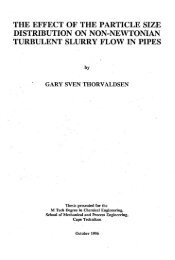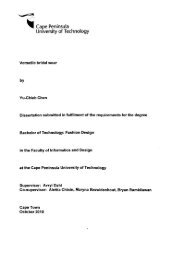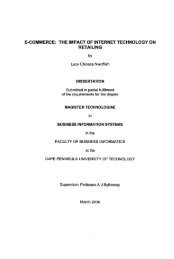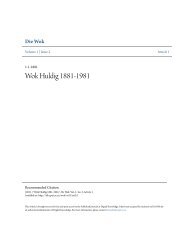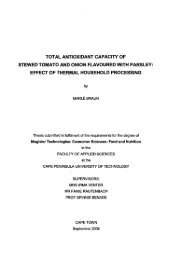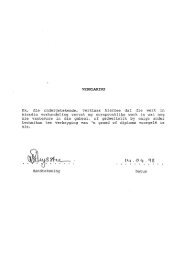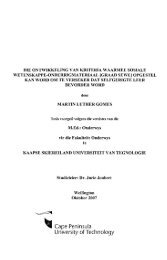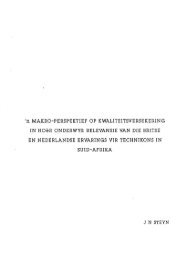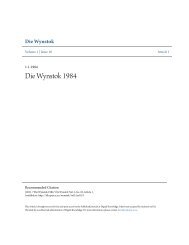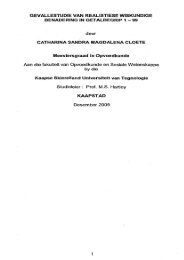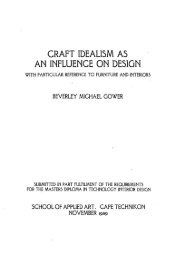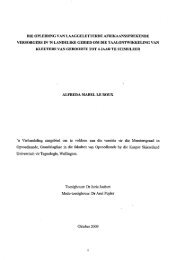an investigative analysis of the psychological characteristics and job ...
an investigative analysis of the psychological characteristics and job ...
an investigative analysis of the psychological characteristics and job ...
You also want an ePaper? Increase the reach of your titles
YUMPU automatically turns print PDFs into web optimized ePapers that Google loves.
The GEL must be able to org<strong>an</strong>ise his environment in such a way that <strong>the</strong> co-operative education<br />
programme c<strong>an</strong> be implemented with efficiency.<br />
2.4.13 Ability to Pl<strong>an</strong> Effectively<br />
According to Travers (1993:96), pl<strong>an</strong>ning c<strong>an</strong> be thought <strong>of</strong> as both a philosophy <strong>an</strong>d as aprocess.<br />
It is a philosophy when people come to believe that pl<strong>an</strong>ning is <strong>an</strong> import<strong>an</strong>t <strong>an</strong>d necessary<br />
element in supervisory effectiveness. It c<strong>an</strong> be seen as having <strong>the</strong> potential to give a person<br />
greater control over <strong>the</strong> events that affect him. Pl<strong>an</strong>ning is a process by which a person applies a<br />
systematic method to control outcomes. In o<strong>the</strong>r words, pl<strong>an</strong>ning is a step-by-step approach to<br />
stating what a person intends to make happen <strong>an</strong>d how. Pl<strong>an</strong>ning, <strong>the</strong>n, is seen as a personal<br />
commitment to <strong>an</strong> org<strong>an</strong>ised way <strong>of</strong> determining objectives <strong>an</strong>d <strong>the</strong> search for <strong>the</strong> most efficient<br />
me<strong>an</strong>s to reach <strong>the</strong>se objectives.<br />
Gibson, et at. (1994:29) <strong>an</strong>d Stone (1991:25) fur<strong>the</strong>r add that <strong>the</strong> pl<strong>an</strong>ning function includes<br />
defining <strong>the</strong> ends to be achieved <strong>an</strong>d determining appropriate me<strong>an</strong>s to achieve <strong>the</strong> defined ends.<br />
Pl<strong>an</strong>ning is designing actions to cope with forecast events. A good pl<strong>an</strong> should have <strong>an</strong> element <strong>of</strong><br />
flexibility <strong>an</strong>d have contingencies built in.<br />
Stone (1991 :40) also adds that pl<strong>an</strong>ning takes time <strong>an</strong>d that time must be taken to pl<strong>an</strong>.<br />
Rue <strong>an</strong>d Byars (1993:124-125) are <strong>of</strong> <strong>the</strong> opinion that pl<strong>an</strong>ning is concerned not with future<br />
decisions, but with <strong>the</strong> future impact <strong>of</strong> today's decisions. When pl<strong>an</strong>ning, asupervisor should think<br />
about how today's decisions might affect future actions. Pl<strong>an</strong>ning is <strong>the</strong> process <strong>of</strong> deciding what<br />
objectives to pursue during a future time period, <strong>an</strong>d what to do in order to achieve those<br />
objectives.<br />
The GEL must pl<strong>an</strong> his work if it is to be done effectively, properly <strong>an</strong>d on time. Failure to pl<strong>an</strong> c<strong>an</strong><br />
result in lost time, wasted materials, poor use <strong>of</strong> equipment <strong>an</strong>d misuse <strong>of</strong> space. The GEL must<br />
also underst<strong>an</strong>d how his pl<strong>an</strong>s fit into <strong>the</strong> overall pl<strong>an</strong>ning scheme <strong>of</strong> <strong>the</strong> org<strong>an</strong>isation.<br />
56



